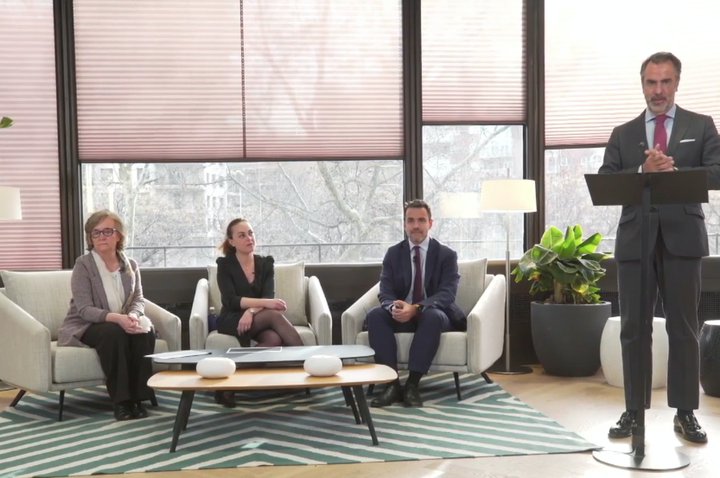Savills Aguirre Newman estimates that, in order to alleviate the imbalance between supply and demand in stressed cities in Spain, 1.2 million additional homes are needed between now and 2030. This is the main conclusion that has been revealed in the event organized together with Garrigues, The future of build to rent, market outlook and tax aspects, where tax experts advocated the need to maintain stable and attractive tax regulations for investors.
Jaime Pascual-Sanchiz, CEO of Savills Aguirre Newman, has highlighted that, in terms of BTR, "Spain faces the social, economic and professionalization challenge of the sector to be able to follow in the footsteps of the markets in Europe, which are ahead of us". After the period of confinement, cities continue to attract talent and "we must take advantage of the opportunity to create an industry where the institutional part has not traditionally been present", he concluded.
During his speech, José Ignacio Guerra, a partner in the Tax Law department at Garrigues, stressed that tax changes "in the middle of the match cannot be good", referring to the fact that the BRT projects pending delivery and the that have just been delivered will find changes in taxation that will affect the investment already made. In addition, he has taken the opportunity to claim "a more stable legal and fiscal framework."
Susana Rodríguez, CCO of Savills Aguirre Newman, explained during her presentation the need to design rental housing in Spain. In 2021 alone, an investment of 2,300 million euros in multifamily was closed, 21% of the total real estate investment. As Susana has argued, these figures respond to demographic and socioeconomic factors, to the imbalance between supply and demand for rent in the real estate market in cities and to the amount of liquidity available in the financial markets.
Regarding the supply, Susana Rodríguez has warned that it is insufficient for the growing demand and has pointed out that in Spain there are 4.2 million rental homes, 95% in the hands of individuals, "in many cases a product obsolete that does not adapt to the needs of the demand, with an average age of 20 years”.
Regarding investment, of the 2,300 million euros in 2021, Madrid captured 52% and Barcelona 13%. The return on this type of asset is very tight, with yields of 3% in prime in large cities and up to 5% in secondary cities, and with financing of around 50% and 60% for new projects. Finally, in relation to rents, Susana Rodríguez has indicated that rents have increased by 14% in the main cities and 35% in the secondary ones.
Tax aspects
Blanca Ángel Barberán, a partner in the Garrigues Tax Law Department, has carried out an analysis of the significant impact of indirect taxation on residential rental activity, and has commented on the different parameters that will determine whether investors will be able to recover the installments borne in investment or if they will become a cost to add to the profitability of the project. The legislation contemplates that rentals of homes and garages and annexes that are rented together with the homes will be exempt from VAT, while the rental of tourist homes with lodging services or the rental of homes to companies will generally be taxed by VAT. VAT (at the rate of 10% or 21%, respectively) or 4% in the case of purchases made by the EDAV.
During their speech, Gonzalo Rincón and Elia Pons, partners in the Garrigues Tax Law department, reviewed the different special regimes (EVAV, SOCIMI, ICC, etc.) provided for in tax regulations for leasing activities, pointing out that they have very different content and scope. In their speech, focused especially on aspects of direct taxation, they commented on the practical application and characteristics of each special regime and the novelties that have been recently introduced. In this sense, they have explained that the decisions of which investment structure should be used depend on numerous factors and there is no single solution.
Lastly, M.ª Ángeles Pérez Ayala, a partner in the Garrigues Tax Law department, addressed aspects related to local taxation with respect to the reference value of real estate for tax purposes, the changes and challenges introduced by the new regulation of the municipal capital gain and the surcharge on the Property Tax on unoccupied dwellings.






